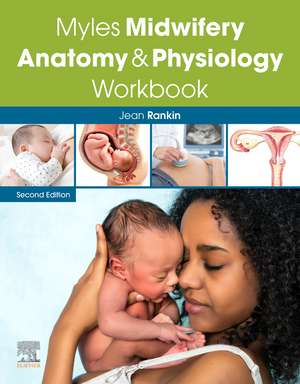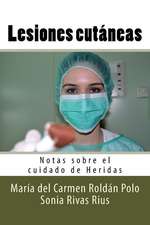Myles Midwifery Anatomy & Physiology Workbook
Autor Jean Rankinen Limba Engleză Paperback – 12 feb 2020
Fully updated in response to student feedback, Myles Midwifery Anatomy and Physiology Workbook, Second Edition presents a wide variety of activities ranging from colouring and labelling exercises and 'match and connect' to 'true false' and 'identify the correct response'. Perfect for readers who find A&P challenging, or for anyone who just needs to recap and consolidate, the book also offers:
. An engaging approach to afford a stimulating way to learn A&P
. Straightforward language and a user-friendly style to help simplify challenging areas of study
. Information based on the latest RCOG and NICE Guidelines
. Content that is suitable for use internationally, for example, by including different approaches to manoeuvres or named movements used in obstetric emergencies
Ideal for all students of midwifery, Myles Midwifery Anatomy and Physiology Workbook is perfect for preregistration readers and anyone on 'return to practice' programs. Although designed for use with Myles Textbook for Midwives and Physiology in Childbearing with Anatomy and Related Biosciences, this resource is suitable for use with any midwifery textbook.
Preț: 149.25 lei
Preț vechi: 206.93 lei
-28% Nou
Puncte Express: 224
Preț estimativ în valută:
28.57€ • 29.71$ • 23.90£
28.57€ • 29.71$ • 23.90£
Carte disponibilă
Livrare economică 14-28 februarie
Livrare express 07-13 februarie pentru 93.71 lei
Preluare comenzi: 021 569.72.76
Specificații
ISBN-13: 9780702076480
ISBN-10: 0702076481
Pagini: 306
Ilustrații: Approx. 179 illustrations
Dimensiuni: 216 x 276 x 12 mm
Greutate: 0.87 kg
Ediția:2
Editura: Elsevier
ISBN-10: 0702076481
Pagini: 306
Ilustrații: Approx. 179 illustrations
Dimensiuni: 216 x 276 x 12 mm
Greutate: 0.87 kg
Ediția:2
Editura: Elsevier
Cuprins
How to use this book; Acknowledgements
Questions
1. The female pelvis and pelvic floor. 2. The reproductive systems. 3. The female urinary tract. 4. Hormonal cycles: fertilization and early development. 5. The placenta. 6. The fetus. 7. Anatomy and physiology: body systems revision. 8. Changing and adaptation in pregnancy. 9. Antenatal care and problems in pregnancy. 10. Conditions in pregnancy. 11. Labour: first and second stages. 12. Third stage of labour. 13. Complicated labour and birth. 14. Midwifery and obstetrics emergencies. 15. The puerperium. 16. Miscellaneous topics. 17. The baby at birth. 18. The newborn baby. 19.Jaundice and blood group incompatibility. 20. Congenital abnormalities and metabolic disorders.
Answers
1. The female pelvis and pelvic floor. 2. The reproductive systems. 3. The female urinary tract. 4. Hormonal cycles: fertilization and early development. 5. The placenta. 6. The fetus. 7. Anatomy and physiology: body systems revision. 8. Changing and adaptation in pregnancy. 9. Antenatal care and problems in pregnancy. 10. Conditions in pregnancy. 11. Labour: first and second stages. 12. Third stage of labour. 13. Complicated labour and birth. 14. Midwifery and obstetrics emergencies. 15. The puerperium. 16. Miscellaneous topics. 17. The baby at birth. 18. The newborn baby. 19.Jaundice and blood group incompatibility. 20. Congenital abnormalities and metabolic disorders.
Questions
1. The female pelvis and pelvic floor. 2. The reproductive systems. 3. The female urinary tract. 4. Hormonal cycles: fertilization and early development. 5. The placenta. 6. The fetus. 7. Anatomy and physiology: body systems revision. 8. Changing and adaptation in pregnancy. 9. Antenatal care and problems in pregnancy. 10. Conditions in pregnancy. 11. Labour: first and second stages. 12. Third stage of labour. 13. Complicated labour and birth. 14. Midwifery and obstetrics emergencies. 15. The puerperium. 16. Miscellaneous topics. 17. The baby at birth. 18. The newborn baby. 19.Jaundice and blood group incompatibility. 20. Congenital abnormalities and metabolic disorders.
Answers
1. The female pelvis and pelvic floor. 2. The reproductive systems. 3. The female urinary tract. 4. Hormonal cycles: fertilization and early development. 5. The placenta. 6. The fetus. 7. Anatomy and physiology: body systems revision. 8. Changing and adaptation in pregnancy. 9. Antenatal care and problems in pregnancy. 10. Conditions in pregnancy. 11. Labour: first and second stages. 12. Third stage of labour. 13. Complicated labour and birth. 14. Midwifery and obstetrics emergencies. 15. The puerperium. 16. Miscellaneous topics. 17. The baby at birth. 18. The newborn baby. 19.Jaundice and blood group incompatibility. 20. Congenital abnormalities and metabolic disorders.
























